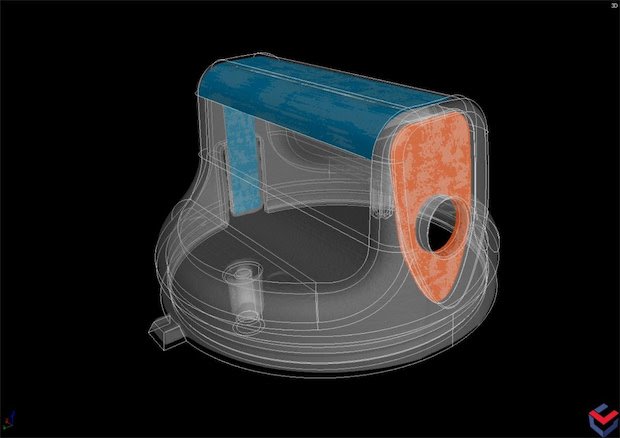Volume Graphics, an industrial CT software provider based in Heidelberg, has joined the Kunststoff-Institut “Rapid Tooling” project, which aims to develop cost and time effective 3D printed molds and inserts.
As a part of the Kunststoff-Institut consortium, Volume Graphics will offer in-quality assurance and process optimization for the 3D printed tooling. Christof Reinhart, CEO of Volume Graphics, said:
“Working on this project with Kunststoff-Institut and partners is very important to us because we are convinced that industrial computed tomography can advance the future of rapid tooling.”
“We have been following the topic of additive manufacturing in general and rapid tooling in particular for some time now and are working on solutions to increase prototype volumes, speed of design and overall part-and-process quality.”

Rapid Tooling at the Kunststoff-Institut
The Kunststoff-Institut is a German research service company associated with the Fachhochschule Südwestfalen University of Applied Sciences. With a network of over 340 companies, this institute facilitates studies involving plastics and injection molding. One of its latest projects, Rapid Tooling, was launched earlier this year to “increase the achievable output volume of 3D printed plastic inserts.” The members of the project include ebm-papst, Fritz Schäfer, Günther Spelsberg, Habasit, Montblanc-Simplo, Quarzwerke, RPM, SimpaTec, DMG Digital Enterprises, Faurecia, Parker Hannifin, V-ZUG and Sonova.
Mold inserts are the chosen focus of Rapid Tooling as they are deemed critical in strengthening parts and/or encapsulating fabricated components. The 3D printed components created are expected to enable effective and safe production of large amounts of high quality molded parts. In doing so, an investigation of the shrinkage behavior of such parts is underway to provide information about the correct design of plastic inserts.

An invaluable design tool
According to Volume Graphics, the development phase of creating injection molded parts and inserts commonly require the production of small-quantity prototypes. This involves the modeling of sample “presentation” components using a low-end rapid process or a more complex method of using an aluminum molding tool. The latter creates the final part with an injection molding machine. 3D printed molds provide an inexpensive tooling solution for both options.
Volume Graphics will use its software, VGSTUDIO MAX and VGMETROLOGY, to inspect the molds and inserts, reducing defects and warpage. Reinhart added, “With our Manufacturing Geometry Correction module we have laid the foundation for many new applications in tool and mold making that can take advantage of improving speed and quality developments in additive manufacturing.”
“This data can be of great use to tool designers, to improve both the tool design itself and the 3D printing strategy used to manufacture it.”
Follow the latest additive manufacturing projects by subscribing to the 3D Printing Industry newsletter. Also, follow us on Twitter and like us on Facebook.
Our 3D Printing Jobs service is now live. Post a job or advance your career in 3D printing now.
Featured image shows the Manufacturing Geometry Correction module within Volume Graphics software correcting a mold design for 3D printing. Image via Volume Graphics.

